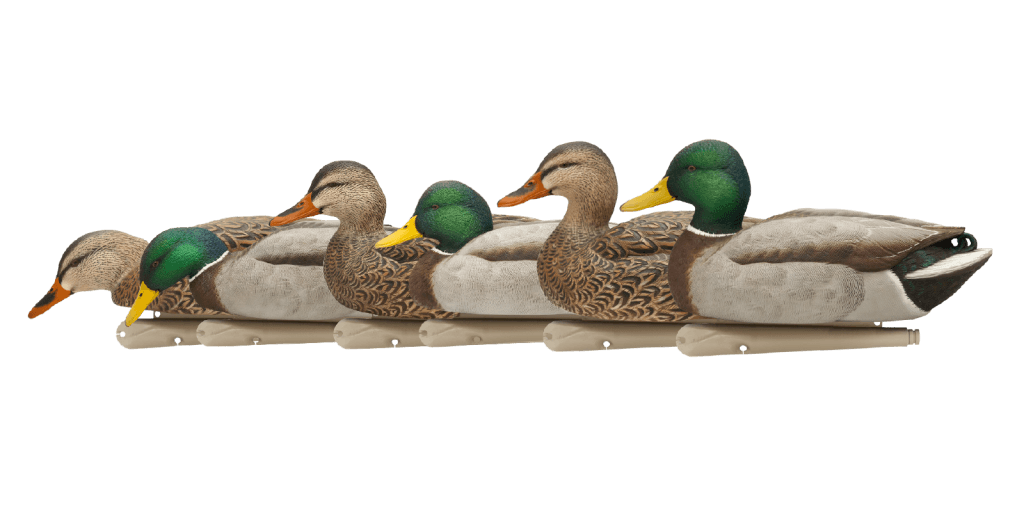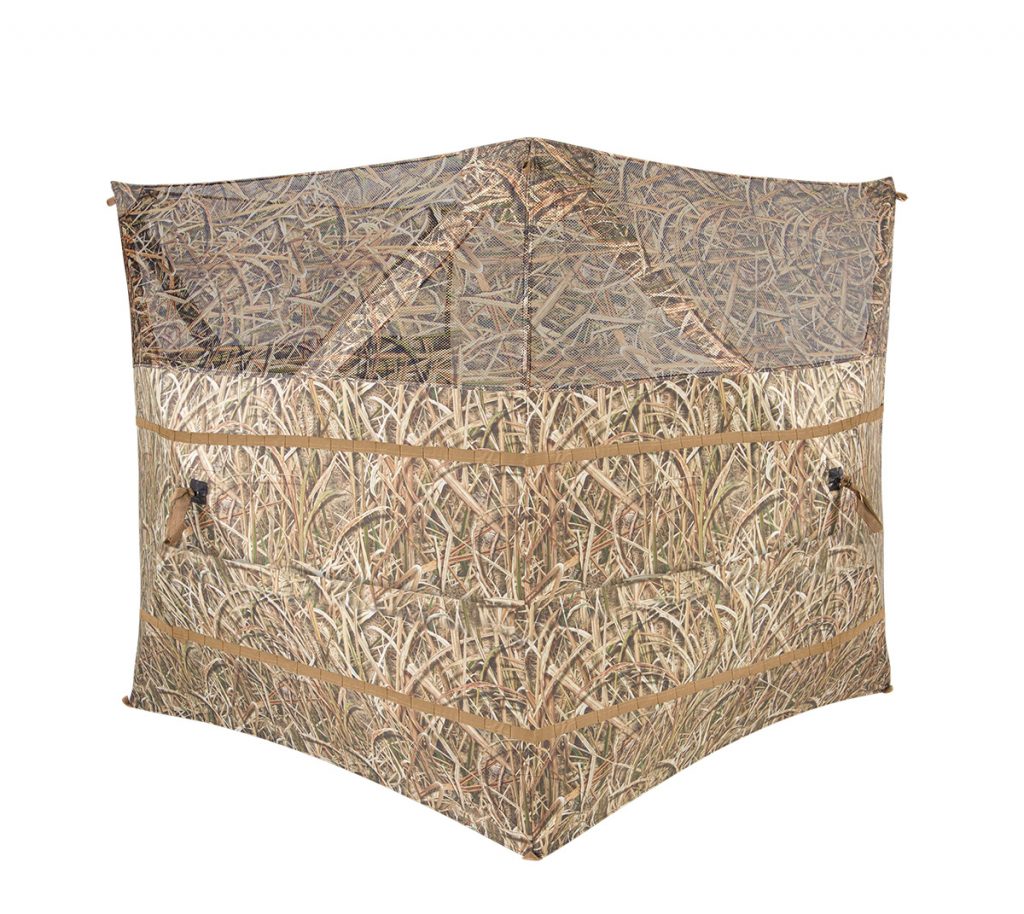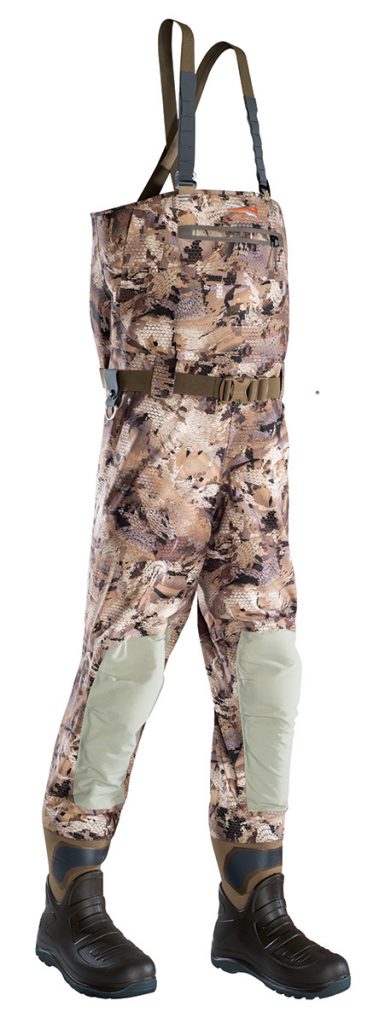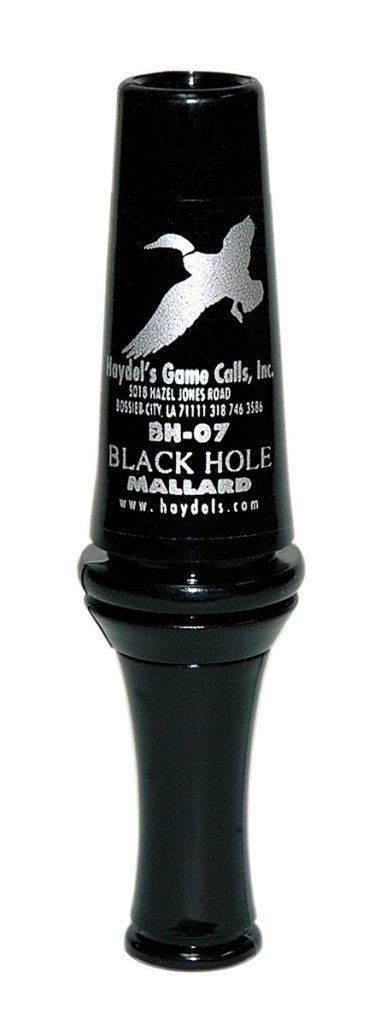
Waterfowl Hunting Gear Guide
Waterfowling is a gear-intensive pursuit bar none. Much of the gear available, though, consists of things you can add over time to make your time on the water easier, more successful and more enjoyable, so if you’re looking to get started after ducks and geese, the following five key gear items are what provide you the foundation to be a successful waterfowl hunter.
Decoys
Ducks and geese respond very well to visual cues, so well that sometimes you may not even have to call to draw birds into your blind. The best decoys are lifelike and offer plenty of detail that will attract and hold the attention of the birds as they descend into your blind area. In water, you’ll want weighted decoys that float upright, and adding a little motion to your spread, either with a jerk string or motion decoy, will also up your odds of success. You don’t have to have hundreds and hundreds of decoys (well, unless you’re hunting snow geese), but be certain the ones you have are properly cared for, stored and transported so that they don’t bounce against one another and ruin the coloration and finish, thus, giving your investment in these tools a longer usable life.
I chose mallards for ducks and Canada decoys for geese, the two most common species of each hunted. Of course there are snow geese (including blues), whitefronted and brant, tundra swans and sandhill cranes are available to hunt in a handful of states, and duck hunters have a veritable cornucopia of species to hunt, from several different teals to wigeon, pintails, wood ducks, and canvasback, among others. And then there are the myriad sea duck species that would take a thick three-volume set to explain. Obviously, if its black ducks you’re after you’ll need black duck decoys, wood duck decoys for wood ducks and so on. There are also decoys called “confidence decoys,” those such as blue herons, that send a signal to circling ducks above that all is right below.
Decoys are more than a historical footnote in America’s history, and those of yore are highly collectible. Volumes have been written on their individual styling and the individual positioning in the decoy “spread.” Beyond the usefulness of modern-day decoys for the hunt, they are well worth exploring beyond that.
- Ducks Affordable Choice: Flambeau Storm Front 2 ($38.50 per 6; $62.99 per12)
- Geese Affordable Choice: Higdon Full Size Goose Floater Canada Foam Filled ($99.99 per 4)
- Ducks Middle-of-the-Road: Avery GHG Essential Series Mallard Magnum ($49.99 per 6)
- Geese Middle-of-the-Road: Lucky Duck Deception Series Collapsible ($179.99 per 6)
- Duck Premium Option: Avian-X Topflight Foam-Filled Fusion Mallard ($99.99 per 6)
- Geese Premium Option: Avian-X AXF Outfitter Lesser Pack Decoy ($469.99 per 12)
Blinds
Duck blinds can be light and austere or very, very fancy. Some permanent blinds even have heat, televisions and cooking areas! Odds are you won’t start out purchasing our accessorizing anything that regal, but there are a number of blind options for any price range. Some lightweight blinds are designed to go up quickly and have exterior straps that allow them to be camouflaged with native grass, or you may opt to hunt from a layout blind. Layout blinds conceal hunters lying flat on the ground who then, when the birds approach will pop open the doors and sit up to shoot. Layout blind are most commonly used in field hunting situations, especially for geese decoying into harvested crop fields.
- Affordable Choice: Flextone Field Hunter Panel Blind ($79.99)
- Middle-of-the-Road: ALPS Outdoorz Zero Gravity Layout Blind($199.99-$279.99)
- Premium Option: MOmarsh ATX Invisi-Lay ($379.99)
Waders
A good pair of waders will keep you dry, but a great pair of waders will keep you comfortable and safely store all of your accessories. The amount of insulation you need varies with the weather conditions and water temperature. If you’re hunting calf-deep water in the south you’ll probably be alright with uninsulated knee waders, whereas hunters working deeper water farther north will want chest waders with heavier Thinsulate or other insulation. Shell loops and zippered, waterproof pockets will help keep all of your gear, like licenses and car keys, secure and safe.
Fit is important. Walking in waders can turn you into a slow-motion act, even with the best fitting waders, and the thicker and heavier they get the more that’s exacerbated (you may want to practice walking in water with your waders on before you go hunting, so you get a feel for how you’ll move). Consider, too, whether you’ll be wearing any kind of liner garment; fleece wader liners are a favorite of cold-weather duck hunters. The boot should allow you to get your foot easily in and out, including with the use of thick socks or footed liners, and you want the boot to fit like a normal pair of boots, i.e., you don’t want your foot sliding back and forth inside. With chest waders, you’ll also want to make sure the way they adhere to your body and how the suspenders are tightened don’t impede your gun mount and swing.
- Affordable Choice: LaCrosse Mallard II ($250)
- Middle-of-the-Road: Banded RedZone Elite Wader ($379.99-$399.99)
- Premium Option: Sitka Delta Wader ($849)
Calls
 One of the keys to becoming a successful waterfowl hunter is finding a call (or several calls) that suit you and learning how to speak fluent duck and goose. Waterfowl are very vocal, and they have a wide range of calls that they use when feeding, gathering and warning of danger. Reed calls, which vibrate to mimic the sounds of birds when air passes over their reeds, are the most popular design. The key to successful calling is a lot of pre-season practice, so apologize to the members of your household in advance when you bring that first call home.
One of the keys to becoming a successful waterfowl hunter is finding a call (or several calls) that suit you and learning how to speak fluent duck and goose. Waterfowl are very vocal, and they have a wide range of calls that they use when feeding, gathering and warning of danger. Reed calls, which vibrate to mimic the sounds of birds when air passes over their reeds, are the most popular design. The key to successful calling is a lot of pre-season practice, so apologize to the members of your household in advance when you bring that first call home.
Most waterfowlers carry more than one call with them, so that they have the ability to switch things up depending on what’s flying around and how the birds are behaving. Having a lanyard makes organizing calls a simple task. Beware, collecting duck and goose calls can be quite addicting!
- Duck Affordable Choice: Duck Commander Ole Raspy ($19.99)
- Goose Affordable Choice: Field Proven Ivory Raptor Poly Goose Call ($30)
- Duck Middle-of-the-Road: Haydels Black Hole Mallard ($29.95)
- Goose Middle-of-the Road: RNT (Rich-N-Tone) Hunter Bocote/Poly Canada Goose Call ($43)
- Duck Premium Option: Zink Custom Hunter PH-1 Polycarbonate ($60.00)
- Goose Premium Option: Power Calls Gravity CTi ($249.99)
Shotgun
Of course you need a shotgun. Otherwise you’re just bird watching.
The best duck and goose hunting shotguns are super reliable and durable, since they’ll likely be exposed to water and rough field conditions. Most waterfowl hunters prefer repeaters like pumps and semiautos, and camo finishes not only protect guns, they help keep them concealed in the blind. An all-over matte black finish, including a matte black synthetic stock, will also work. (Waterfowl have excellent eyesight.)
Twelve-gauge guns are most popular for both ducks and geese, and newer 20-gauge loads make that gauge an option for duck hunters who prefer a lighter gun with less recoil. A gun that comes equipped with studs allows for mounting a sling, which keeps your hands free for carrying gear to and from the blind. Many waterfowl-specific shotguns also have enlarged trigger guards and oversized bolt release and safeties to enhance safety while wearing gloves.
- Affordable Choice: Stoeger M3000 ($559)
- Middle-of-the-Road: Remington V3 ($895-$995)
- Premium Option: Browning Maxus Wicked Wing ($1,739.99-$1869.99)
*-*-*-*-*-
Brad Fitzpatrick is a full-time outdoor writer based in southern Ohio. He is the author of more than 400 articles which have appeared in dozens of regional, national and international publications, and he is currently the author of five books on hunting, shooting, history and biology. Brad’s writings and photographs have won multiple awards including the Great Lakes Outdoor Writers Best-of-Best Award as well as the Professional Outdoor Media Association’s Pinnacle Award for Conservation. He and his wife Bethany have two children, Caleb and Audrey.

